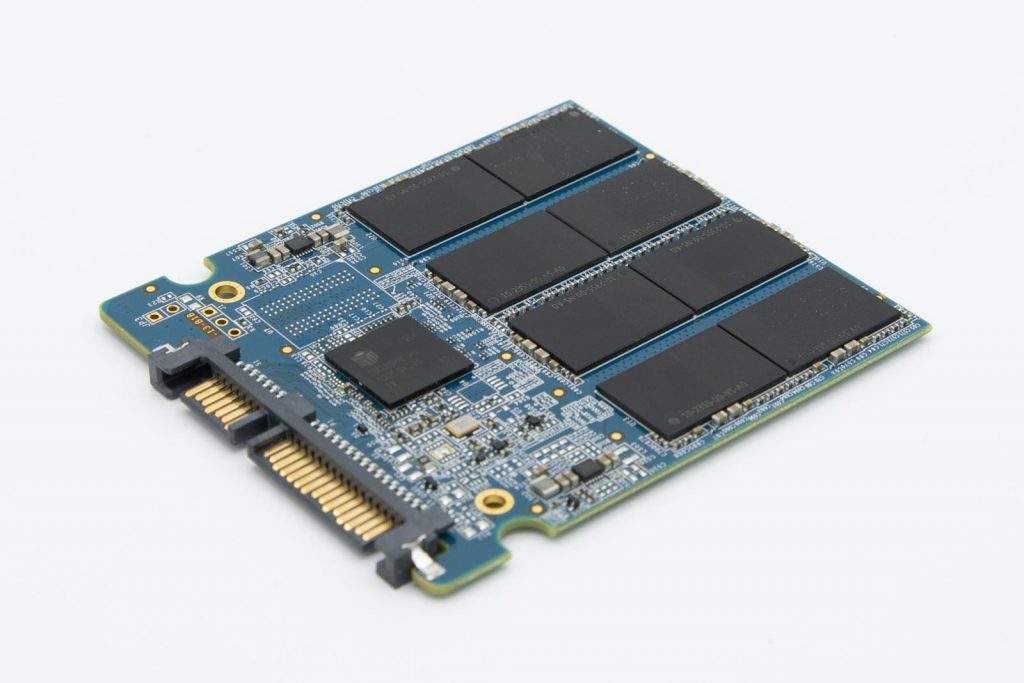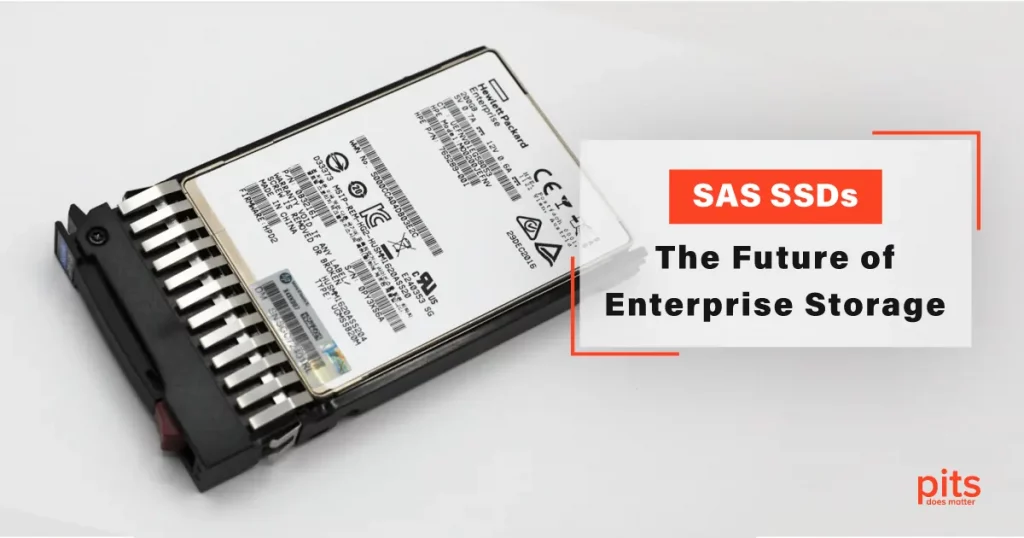In the fast-paced world of technology, data storage and access play a crucial role in determining the efficiency and performance of modern computing systems. Traditional Hard Disk Drives (HDDs) have long been the go-to option for storing data, but their mechanical nature poses limitations on speed and reliability. The emergence of Solid-State Drives (SSDs) has revolutionized the storage landscape, and among them, SAS SSDs stand out as a powerful solution offering unparalleled speed and performance. In this blog post, we’ll explore what SAS SSDs are, how they work, their advantages and disadvantages, and how they stack up against other SSD types.
What is SAS SSD?
SAS SSD stands for Serial Attached SCSI Solid State Drive. It is a high-performance storage device that combines the benefits of both SAS and SSD technologies. SAS, which stands for Serial Attached SCSI, is a data transfer protocol used to connect storage devices to a computer’s motherboard. It is the successor to the older parallel SCSI (Small Computer System Interface) and is widely used in enterprise environments due to its reliability and scalability.
On the other hand, SSDs, or Solid-State Drives, are storage devices that use NAND flash memory to store data. Unlike HDDs, which use spinning disks and read/write heads, SSDs have no moving parts, making them faster, more durable, and less susceptible to mechanical failures. The combination of SAS and SSD technologies in SAS SSDs results in a powerful and efficient storage solution.

SAS SSDs operate on the same principles as traditional SSDs. They use NAND flash memory chips to store data in a non-volatile manner. When data is written to a SAS SSD, it is stored in the NAND cells and remains there even when power is removed.
Similarly, when data is read from the drive, the stored information is retrieved from the NAND cells and provided to the system for processing.
The key differentiator for SAS SSDs lies in their interface – the SAS interface. The SAS interface allows for higher data transfer rates and improved reliability compared to other interfaces like SATA (Serial ATA). The ability to use SAS’s full duplex capabilities enables simultaneous data transfers in both directions, increasing overall efficiency.
Advantages of SAS SSD
- Speed: The most prominent advantage of SAS SSDs is their superior speed. The SAS interface, combined with the inherent speed of SSDs, enables these drives to achieve remarkable data transfer rates and reduce latency significantly. This makes them ideal for tasks that demand fast and reliable access to data, such as enterprise databases and transaction processing.
- Reliability: SAS SSDs are designed for use in enterprise-grade environments where reliability is paramount. The SAS interface, built with redundant pathways, ensures better fault tolerance, increased data integrity, and reduced downtime.
- Scalability: SAS SSDs support multiple drive connections through expanders, allowing for easy scalability. This makes them suitable for large-scale storage solutions in data centres and enterprise settings.
- Endurance: NAND flash memory used in SAS SSDs has a limited number of write cycles.
However, enterprise-grade SAS SSDs employ advanced wear-levelling algorithms and over-provisioning to extend their lifespan and endurance, making them suitable for heavy workloads.
Disadvantages of SAS SSD
- Cost: The superior performance and reliability of SAS SSDs come at a higher cost compared to other SSD types, such as SATA SSDs. This cost can be a deterrent for budget-conscious consumers or applications that don’t require top-of-the-line performance.
- Compatibility: The SAS interface is not as widely adopted in consumer-grade devices as SATA or PCIe (Peripheral Component Interconnect Express) interfaces. This means SAS SSDs might not be compatible with all systems, limiting their use primarily to enterprise environments.
SAS SSD vs. Other SSD Types
- SAS SSD vs. PCIe SSD: PCIe SSDs (Solid State Drives connected through PCIe slots) also offer high-speed data transfer rates and have gained popularity in both consumer and enterprise markets. SAS SSDs, however, still have an edge in certain enterprise scenarios, especially when it comes to supporting multiple drive connections and maintaining high reliability in heavy-duty workloads.

- SAS SSD vs. SATA SSD: The primary difference between SAS SSDs and SATA SSDs lies in their target markets. SATA SSDs are more consumer-oriented and are commonly used in laptops, desktops, and gaming consoles. They offer excellent performance for everyday computing needs but lack the robustness and speed of SAS SSDs. SAS SSDs, on the other hand, are geared towards enterprise environments that require high-speed data access and constant reliability.
Data Transfer Rate:
The data transfer rate of a SAS SSD depends on various factors, including the NAND flash type, the SAS interface version (e.g., SAS 12Gbps or SAS 24Gbps), and the drive’s internal architecture. SAS SSDs with the latest interface versions can achieve impressive read and write speeds, often surpassing several gigabytes per second.
Form Factor:
SAS SSDs are available in various form factors, just like other SSD types. The most common form factors include the standard 2.5-inch, 3.5-inch, and smaller M.2 form factors. The choice of form factor depends on the specific application and the system’s compatibility.
Read and Write Performance:
The read and write performance of SAS SSDs is a critical factor in determining their overall speed and efficiency. These drives typically excel in random read-and-write operations, making them suitable for data-intensive applications such as databases and virtualization. The combination of low latency and high IOPS (Input/Output Operations Per Second) makes SAS SSDs a preferred choice for enterprise-level workloads.
SAS SSDs are a powerful and efficient storage solution that brings together the benefits of SAS and SSD technologies. With their superior speed, reliability, and scalability, they are well-suited for enterprise environments and data-intensive applications.
While they come at a higher cost and may not be compatible with all systems, the advantages they offer make them a compelling choice for businesses seeking unparalleled storage performance. As technology continues to evolve, SAS SSDs will likely remain at the forefront of cutting-edge storage solutions, empowering businesses with the speed and efficiency they need to thrive in a data-driven world.
Frequently Asked Questions
What does SAS SSD stand for?
SAS SSD stands for “Serial Attached SCSI Solid State Drive.” It’s a high-speed storage device that combines the benefits of SAS (Serial Attached SCSI) and SSD (Solid State Drive) technologies.
How does an SAS SSD differ from a regular hard drive?
Unlike traditional hard drives that use mechanical parts to store and retrieve data, SAS SSDs have no moving parts. Instead, they use NAND flash memory, making them much faster, more reliable, and energy-efficient.
What are the advantages of using SAS SSDs?
SAS SSDs offer superior speed, reducing data access time and improving system responsiveness. They are more reliable, consume less power, and are suitable for heavy workloads, making them ideal for business and enterprise applications.
Can I use an SAS SSD in my laptop or desktop computer?
SAS SSDs are primarily designed for enterprise-level applications and might not be compatible with standard consumer laptops or desktops. They require specific SAS interfaces and controllers, which are typically found in enterprise storage systems.
Are SAS SSDs suitable for RAID configurations?
Yes, SAS SSDs are well-suited for RAID (Redundant Array of Independent Disks) setups. They offer excellent data integrity and reliability, making them a preferred choice for critical data storage and fault-tolerant systems in enterprise environments.
